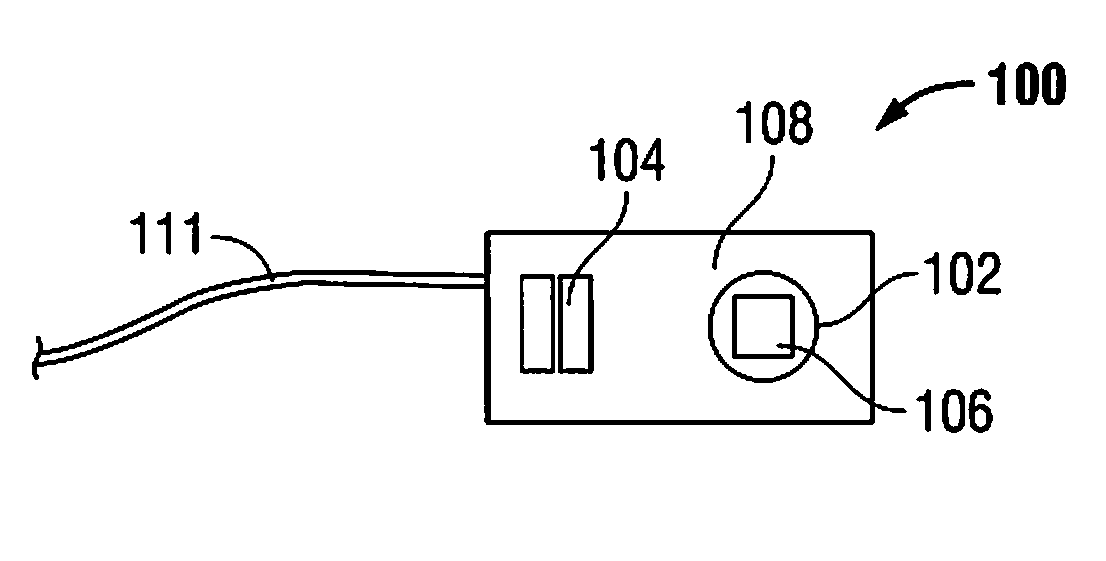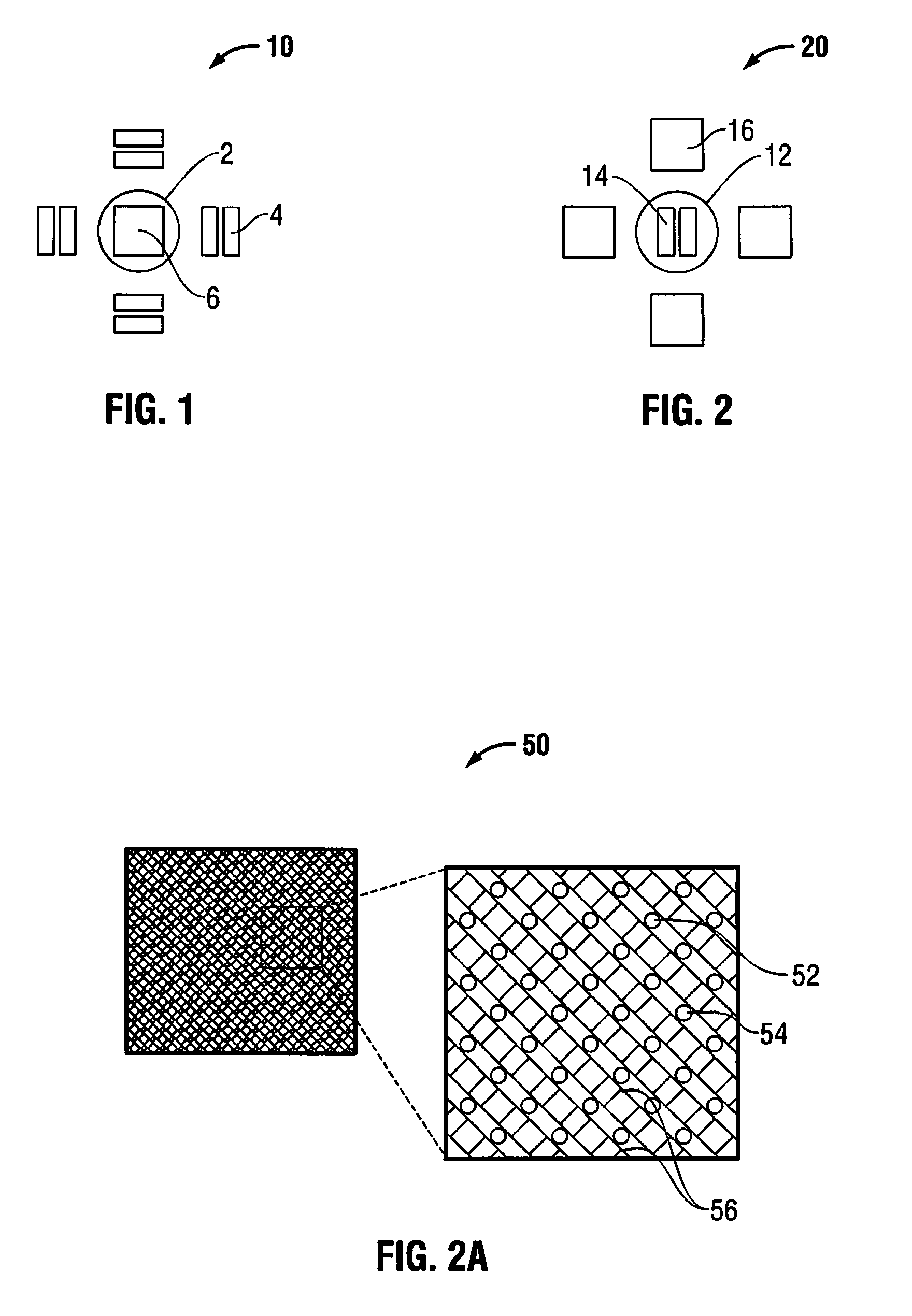Optical sensors for intraoperative procedures
a technology of optical sensors and intraoperative procedures, applied in the field of optical sensors, can solve the problems of affecting the oxygen circulation of the tissue, and complicating the procedure, and achieve the effect of reducing the pressure in the inflatable sleev
- Summary
- Abstract
- Description
- Claims
- Application Information
AI Technical Summary
Benefits of technology
Problems solved by technology
Method used
Image
Examples
second embodiment
[0027]Depending upon the particular application, an intra-operative sensor may include a particular configuration of photo-detectors and light emitting sources. A first and an intra-operative sensor 10, 20 include different configurations of photo-detectors 6 and light emitting sources 4 and will now be described with reference to FIGS. 1 and 2.
first embodiment
[0028]an intra-operative sensor 10, as shown in FIG. 1, includes a photo-detector 6 around which multiple light emitting sources 4 are placed (more than one photo-detector could also be provided). The light emitting sources 4 may be placed radially around the one or more photo-detectors 6. In the embodiment shown, the light emitting sources 4 substantially encircle the photo detector(s) 6. In addition, the light emitting sources 4 may be spaced equidistantly apart from one another. Other spacings are also contemplated. The light emitting sources 4 may include, but are not limited to, light emitting diodes (LED's).
[0029]An optical isolator ring 2 may be placed around the one or more photo-detectors 6. In this manner, the ring 2 is between the detector(s) 6 and light emitting sources 4. The optical isolator ring 2 inhibits direct interference from light emitting sources or from ambient light, i.e., the ambient light of the operating room. By reducing the interference from light source...
PUM
 Login to View More
Login to View More Abstract
Description
Claims
Application Information
 Login to View More
Login to View More - R&D
- Intellectual Property
- Life Sciences
- Materials
- Tech Scout
- Unparalleled Data Quality
- Higher Quality Content
- 60% Fewer Hallucinations
Browse by: Latest US Patents, China's latest patents, Technical Efficacy Thesaurus, Application Domain, Technology Topic, Popular Technical Reports.
© 2025 PatSnap. All rights reserved.Legal|Privacy policy|Modern Slavery Act Transparency Statement|Sitemap|About US| Contact US: help@patsnap.com



